Bats are a fascinating group of animals. They’ve been flapping through the skies for more than fifty million years and are still the only mammals on Earth that can truly fly. They’ve conformed their diets, their homes, and their bodies to nearly every environment worldwide, with more than 1,200 species now spread across the planet. Some are tiny (the one-inch long Bumblebee Bat of Thailand is the world’s smallest known mammal), while others are quite massive (the wingspan of tropical Flying Foxes can reach six feet!). Poke around online to see some of their incredible diversity. Just skip over the Wrinkle-faced Bat if you want to sleep at night.
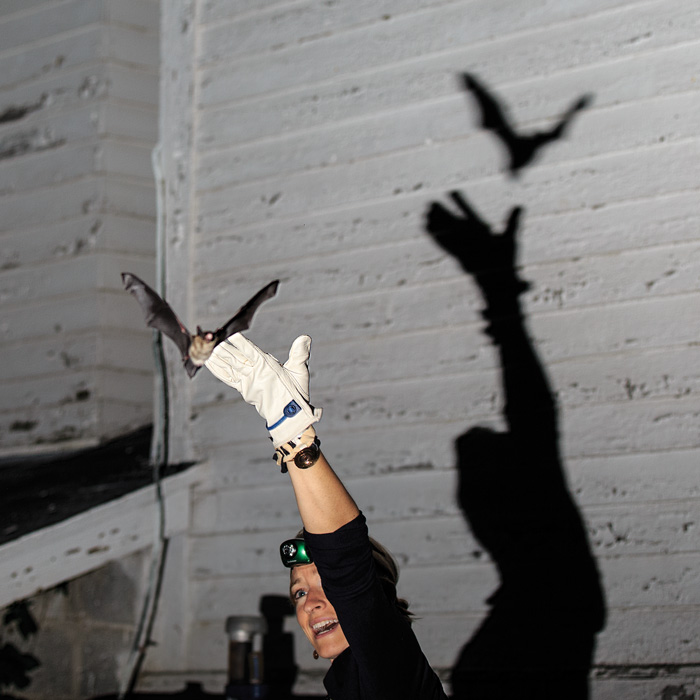
One thing I find most interesting about bats is the dichotomy between how common they are and how poorly they’re understood. Whether you live on a farm or in the mountains or in a city, bats are all around. They’ll be flying around your neighborhood tonight—probably even passing over your home. Stare at the sky a while at dusk and there’s a good chance you’ll see one overhead. Yet most people don’t stare at the sky, and it’s a narrow window of opportunity before that sky goes from dusk to dark. For the rest of the night, bats go about their business in stealth. Even in daytime they prefer the refuge of darkness, finding shelter in narrow nooks and crevices where other animals won’t see or can’t reach.
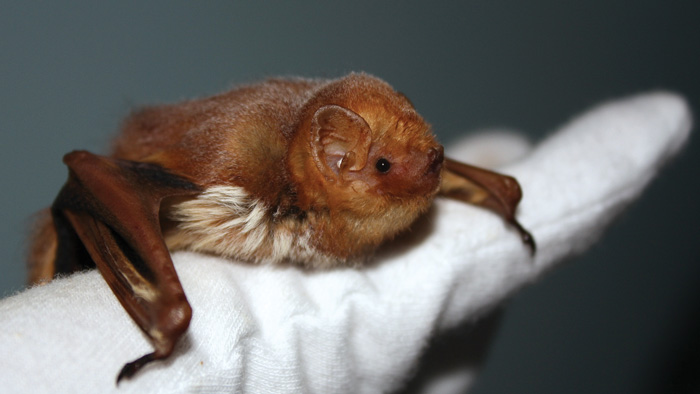
So most folks have no idea what bats are up to. We can watch the squirrels and the birds. We know those animals’ agendas and are pretty confident they don’t want to drink our blood or nest in our hair. Bats, we’re not so sure about. Most close encounters between people and bats are therefore confusing (Why is it here? What will it do?) if not full-on panicked. Somehow we learned to run for the tennis racket instead of opening a window.
I see a big shift happening in the public opinion about bats, though. Light is being shed on their secretive little lives, and people are really paying attention. Of course, it took the epic tragedy of White-nose Syndrome to accelerate it. This fungal disease attacks bats during their delicate winter hibernation, leaving them dehydrated, starved, and with tattered wings unable to fly. In just eight years, White-nose has blown through at least twenty-five US states and five Canadian Provinces and left six million dead bats in its wake. Suddenly the spooky little creatures of the darkness seem vulnerable and sympathetic. It should break anyone’s heart to think of so many dying helplessly in the cold.
In a big way, White-nose swung the door wide open to understanding and appreciating bats. Even grade school kids now know that bats are important insect-eaters. Scientists are digging deeper than ever before to quantify the value of bats and share information with the public. A recent study published in the journal, Science, finds that bats may be worth as much as $53 billion a year to US agriculture alone, saving crops from corn earworm moths, potato beetles, cucumber beetles, even stink bugs, and reducing the need for chemical pesticides. That’s a rather good reason to want bats around.
People are relating to bats in more personal ways, too. As bat educator Leslie Sturges says, “We love to spew out figures about how many thousands of bugs each bat eats per night and how they save us X number of dollars, but it means just as much to people that a momma bat loves her baby.” Wow, mother bats nurse their young just like we do. And they live a really long time! (As many as thirty years.) They huddle together with their roost mates when it’s chilly outside, or find warmth beneath the leaves on the forest floor. They chatter, they scuffle, and they hide from things that scare them. These are all such simple bits of detail that allow people to care if bats are safe and healthy and housed.
As a result, more citizens and conservationists than ever stand willing to help in any way they can. At the Conserve Wildlife Foundation of New Jersey, our bat projects now involve at least one hundred volunteers, partly because there is so much to be done, but as much to give people a chance to learn and observe. Most people, for example, have never sat and watched bats emerge from a roost at dusk, even if the roost is their own attic or eave. For our Summer Bat Count project they do just that: sit, wait for the sun to set, and tally the bats as they dive quietly into the night. We get valuable data, but the counters get an experience. They hear the eager squeaks of bats waiting for the sky to darken. They imagine what it must feel like to make the plunge. They see the hungry bats dip and twist in pursuit of a meal. They identify. At least that’s what I do when I’m out there.
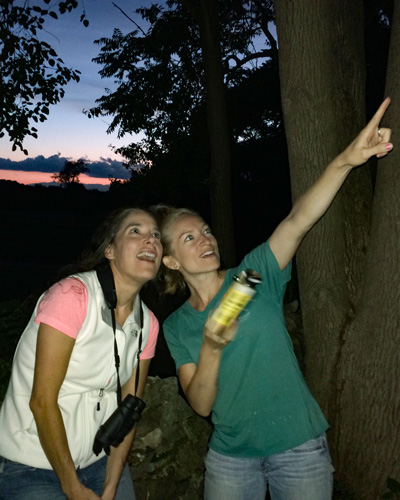
We also learn (and entertain) a lot with acoustic detectors. As a bat flies through the dark, it navigates by sound rather than by sight, giving off rapid high-frequency vocalizations that bounce off nearby objects and return to its ears as echoes. The echoes construct a detailed “sound image” of surrounding objects —their size, shape, distance, trajectory—helping the bat determine danger from dinner. Of course, these sound pulses are too high-pitched for our ears to hear, but the acoustic detector picks them up. It spits out an audible “choo-choo-choo-choo-choo” whenever a bat flies within a couple hundred feet.
This decoding of the bats’ secret sonar is fascinating for people (myself included!). You can even hear the “feeding buzz” of a bat catching an insect. When a prey item is detected, the bat quickens its emissions from about ten to 200 sound pulses per second in order to precisely track the insect. Translation: “choo-choo-choo-choo-TZZZzzzzzz.” Then the bat uses its wing like a big elastic catcher’s mitt to scoop the bug right out of the air and into its mouth. It may be too dark out too see, but when you hear this sound you know a bug is going down. We lead a few interpretive bat watches every summer, so keep an eye on our program calendar to join in if you like.
We do mainly use the bat detectors for science rather than sport. New Jersey is part of a nationwide Mobile Acoustic Bat Survey to monitor bat activity along rural driving routes. Surveyors strap a detector to the roof of their car and slowly drive a prescribed route. The driver enjoys the show via headphones while a data card stores each bat encounter for us to review later. Different bat species have their own unique call patterns, so we can gather data not just on how many bats are encountered along a route, but what kind of bats they are as well (NJ is home to nine species). This is our most efficient, non-invasive, across-all-species program for tracking the state’s bat community over time.
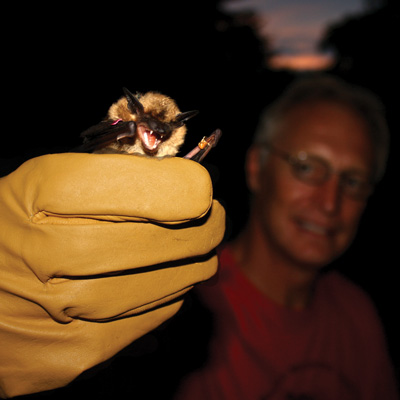
While these monitoring programs are important and engaging, most of the trends they reveal are pointing downward.The Summer Bat Count shows that Little Brown Bats—once the most common and widespread species in North America—have dropped in number by more than 95% since White-nose arrived. Winter counts in Hibernia Mine (Morris County) just dropped below the 500 mark this year, while 27,000 tiny skeletons still cover the floor. Projects to catch and band bats for survivorship research are incredibly necessary, and I’m thrilled for every chance to hold a livid little bat in my gloved hands. But that doesn’t really do much to save lives.
Meanwhile, one species that’s actually doing well despite recent challenges, the Big Brown Bat, is testing people’s new-found compassion. Big Browns are one of the few bat species in our region that have discovered that buildings can make warm, safe, virtually fail-proof roosts. They squeeze in through open eaves, warped siding, unscreened attic vents...openings as small as a half-inch wide to access shelter. Or if the building is sealed up tight, they may perfectly happily hang out behind a shutter, beneath a fascia board, or under a roof tile or ridge cap. Many people “cohabitate” with bats for years without knowing it, enjoying a bug-free backyard and having no issues.
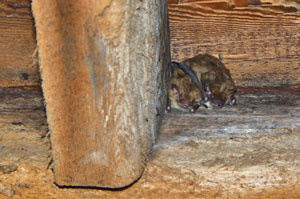
Once the bats are discovered, though, they’re not always welcome to stay. In New Jersey alone, a few hundred bat eviction jobs are done every year by professional pest controllers (my estimate, based on personal communications). While bats are protected by law against killing or harm, there is still room for error when it comes down to how to exclude bats and when. And even the most humane exclusions leave the animals scrambling for a new home.

So my latest project networks with homeowners to help them evaluate their bat situations fairly, with pest controllers to make sure the best exclusion guidelines are being followed, and with service groups to produce bat houses for displaced colonies. It feels like a fluid progression from all the work we’ve done so far and probably would not have gone over so well just a decade ago. In just three years I’ve worked with nine Scouts and a nature center on bat house projects. More than 100 people helped to build and donate 100 bat houses to our organization. We’ve installed half of them already at exclusion sites, and the fact that these roosts were built by citizens gives homeowners a sense of community stewardship—because the welfare of bats is everyone’s concern.
This last sentiment has been felt without falter in many cases, but especially over the past year at Tranquility United Methodist Church in Sussex County. The historic church has been unoccupied lately due to storm damages, a collapsed roof, and other structural problems. During the early stages of renovation it became clear that the large colony of bats in the attic—which had probably been there for a century—would be displaced by the massive repairs. Pastor Rich Peter and his Trustees consulted with us to hash out a plan, and they’ve been patient and calm with all the setbacks created by their small tenants. “It is our responsibility to be good stewards of all God’s creatures,” Pastor Rich said.
The church allowed acoustic monitoring in the attic all winter, which confirmed that at least some bats were hibernating in the unheated space (my first account of this behavior). We mounted bat houses to prepare for the eventual exclusion. Volunteers from Antler Ridge Wildlife Sanctuary counted bats at dusk and swept through the congregation area to rescue pups that had fallen through the broken ceiling. A public program and bat watch was held to share the story and the excitement of a bat emergence with the community. From all the happy squeals I would say we made a few converts that night.
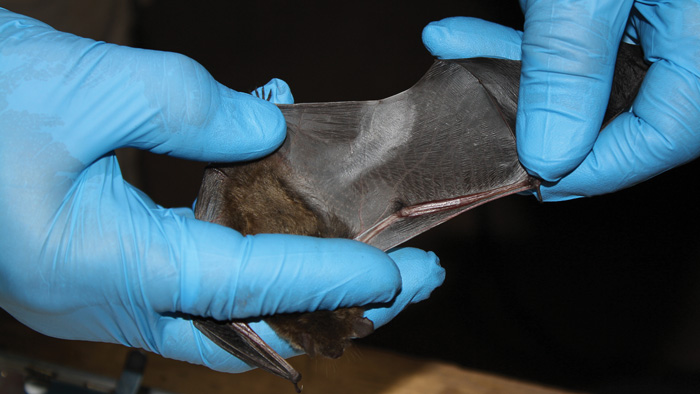
Whether Little Brown Bats, Long-eared Bats, Tri-colored Bats, and their kin will bounce back from White-nose Syndrome is still anyone’s guess. At least we still have bats in the sky, like those hardy Big Browns. Research and monitoring will tell us how they’re doing, but at the end of the day it’s humanity that will save bats. More acceptance and appreciation, conservation of habitat, public support for the protections bats need in forests, buildings, and the underground. More staring up at the sky. These are the ingredients we need to ensure our night-flying friends have the best chances to survive and thrive in our ever-changing, challenging, post-White-nose world.